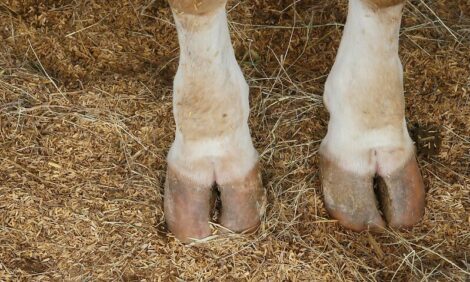



Using Fewer Antibiotics Does Not Affect Overall Profit, Dutch Pig Farmers Find
NETHERLANDS - At a recent closed meeting in Amsterdam, European Ministers of Health and Ministers of Agriculture met to discuss the “One Health“ approach. Minister for Agriculture Martijn van Dam highlighted examples from Dutch pig farms, where producers found that the prevention of infections is indeed possible through improved practices. Furthermore, prevention, he said, is possible without negatively impacting profits, writes Melanie Epp for ThePigSite.The report, 'Good Practices', was compiled by LEI Wageningen UR in the Netherlands and features four cases studies, two poultry and two pig studies.
Today, antimicrobial resistance is considered a major worldwide threat to both humans and animals. Each year, some 700,000 people die of drug-resistant infections, a number that, according to the most recent issue of The Economist, could rise to 10 million by 2050. For this reason, antimicrobial resistance is a top priority of the EU-presidency, held this year by The Netherlands.
Good practices: The Dutch example
Since 2009, the Dutch have been working to lower their use of antibiotics in livestock production, and they’ve had great success. Since that time, in fact, they have lowered usage by 58%. This was done through a combination of increased monitoring, and the implementation of mandatory animal health plans and herd inspections.
“This approach led to a significant reduction in the number of resistant bacteria in our livestock population,” said Van Dam.
Perhaps of most interest to producers, though, is the fact that reduction did not affect profits. In fact, according to Van Dam, Dutch farmers have been able to maintain both production levels and profit margins. Overall, mortality has not increased since that time either. Van Dam highlighted two pig farms that stand as examples of how ‘good practices’ can lead to significant change. The farms, said Van Dam, are typical examples of livestock farms and management methods found in The Netherlands.
On the first farm, a farrow-to-finish pig farm in Roosendaal, farmers Sjef and Marian Van den Nieuwelaar raise 500 sows and 4,500 fattening pigs. In 2011, the couple made it their goal to reduce antibiotic use from 16 animal daily doses per sow per year to fewer than five. Not only did they achieve that, but their gross margin per animal was greatly enhanced in that time as well.
How did they do it? The Van den Nieuwelaars say that they set up an animal health team consisting of themselves, their employees, the feed consultant and the vet. All measures taken on the farm are discussed as a team; there must be agreement before action is taken.
Further, the Van den Nieuwelaars invested €20,000 in technical improvements. The manure truck no longer drives up to the animal housing unit, but instead collects manure via pipework at a distance. Access routes to the farm have been changed as well, minimizing the risk of introducing infections. Quarantine housing has also been established to keep young sows separate from the rest of the pigs. The total cost of these investments is €3,000 annually. The Van den Nieuwelaars say that the additional costs are more than compensated for by the improvements, both technical and economic.
On the second farm, a 1,750-fattening pig operation owned by the Harbers family in De Heurne, the aim was to produce quality pigs rather than to obtain maximum growth. Mr Harbers aims for an antibiotic usage of 0.1 animal daily doses per animal per year. He planned to achieve this by preventing infection from entering the farm, and by making sure the animals are kept free of stress for the whole of their lives.
“I believe the relationship and contact with the pig supplier is important,” said Harbers. “Then I know exactly what type of pigs I’m getting and how I can pamper them to give them a good start.”
During transport, but to and from the farm, Harbers uses his own vehicles. He can do this because both the breeder and the slaughterhouse are nearby. While this does incur extra costs, the benefits outweigh them. For one, he can deliver nearly all of the pigs when they are in their right weight class. The extra measures he’s taken also prevent infections from entering the farm.
The changes he’s made have led to an average savings of €0.40 in overall health costs per fattened pig and a 0.8% lower mortality rate. It might seem like more work, but Harbers estimates his net benefit to be around €3,000 per year.
At the conclusion of his talk at the Ministers’ meeting in Amsterdam, Van Dam pointed out that tackling the immense challenge presented by antimicrobial resistance was not just the responsibility of the agricultural industry. It is everyone’s responsibility, he said.
“We need not only cooperation between the health and veterinary sectors, but also between countries,” he concluded. “After all, we can’t stop bacteria at the border.”







